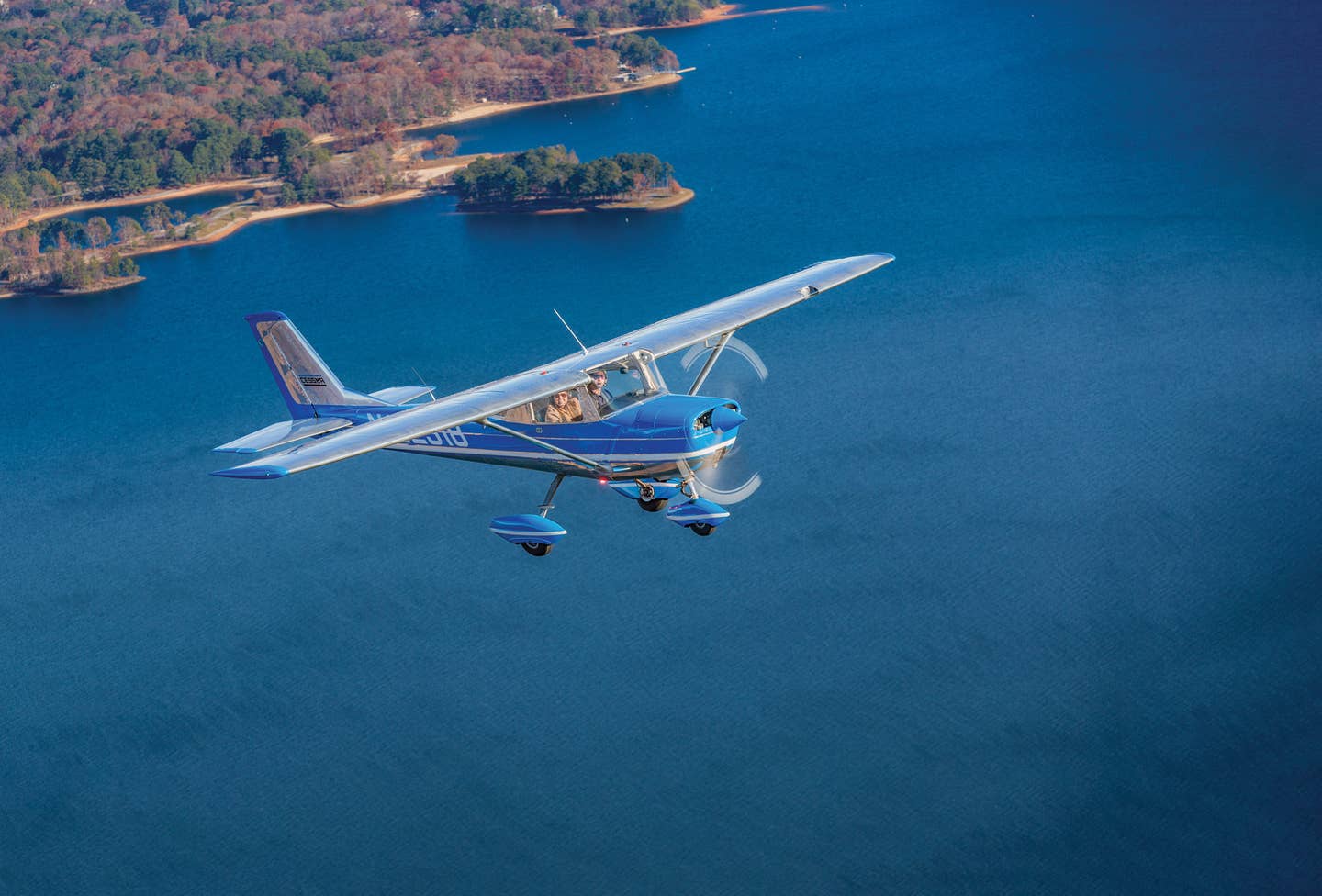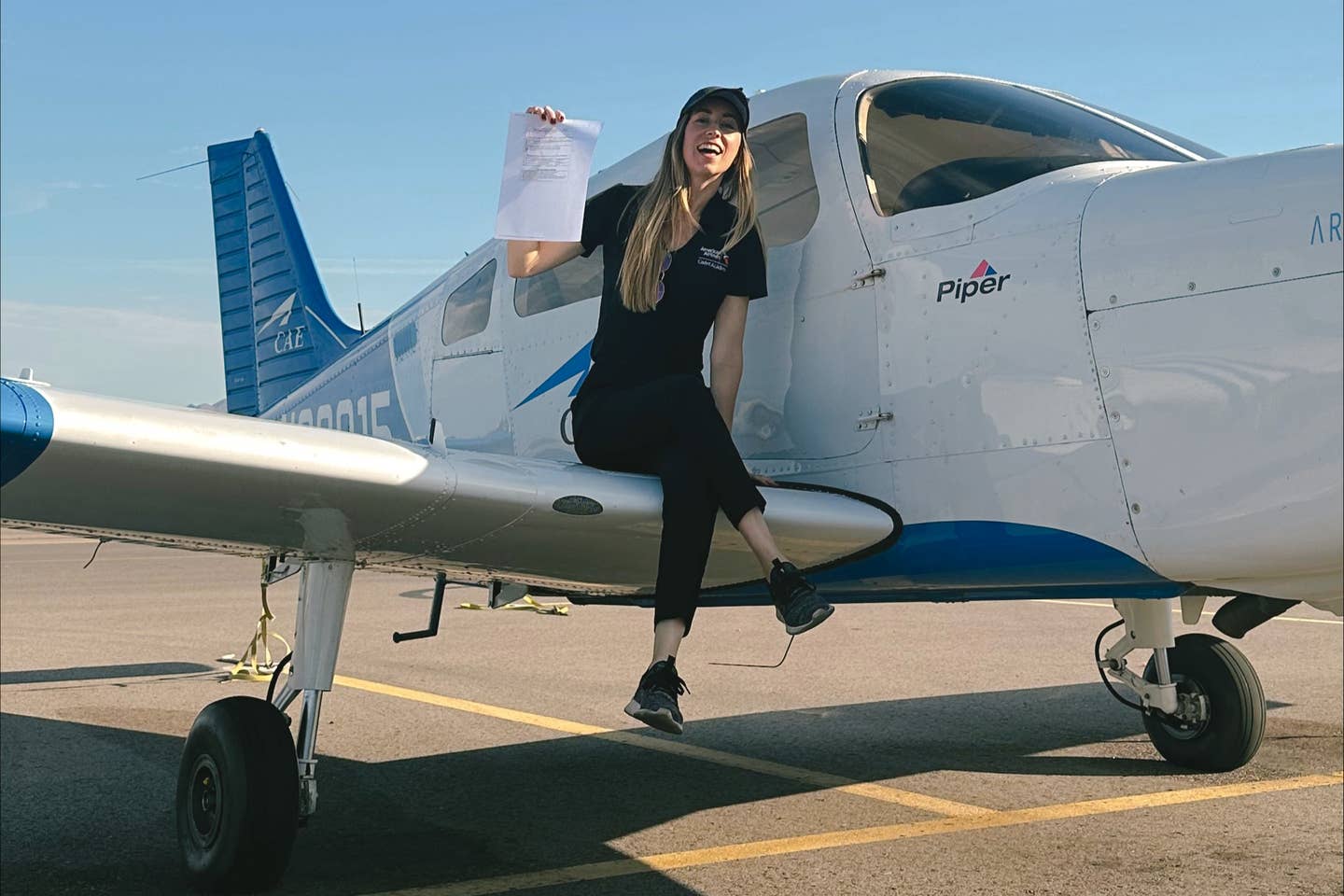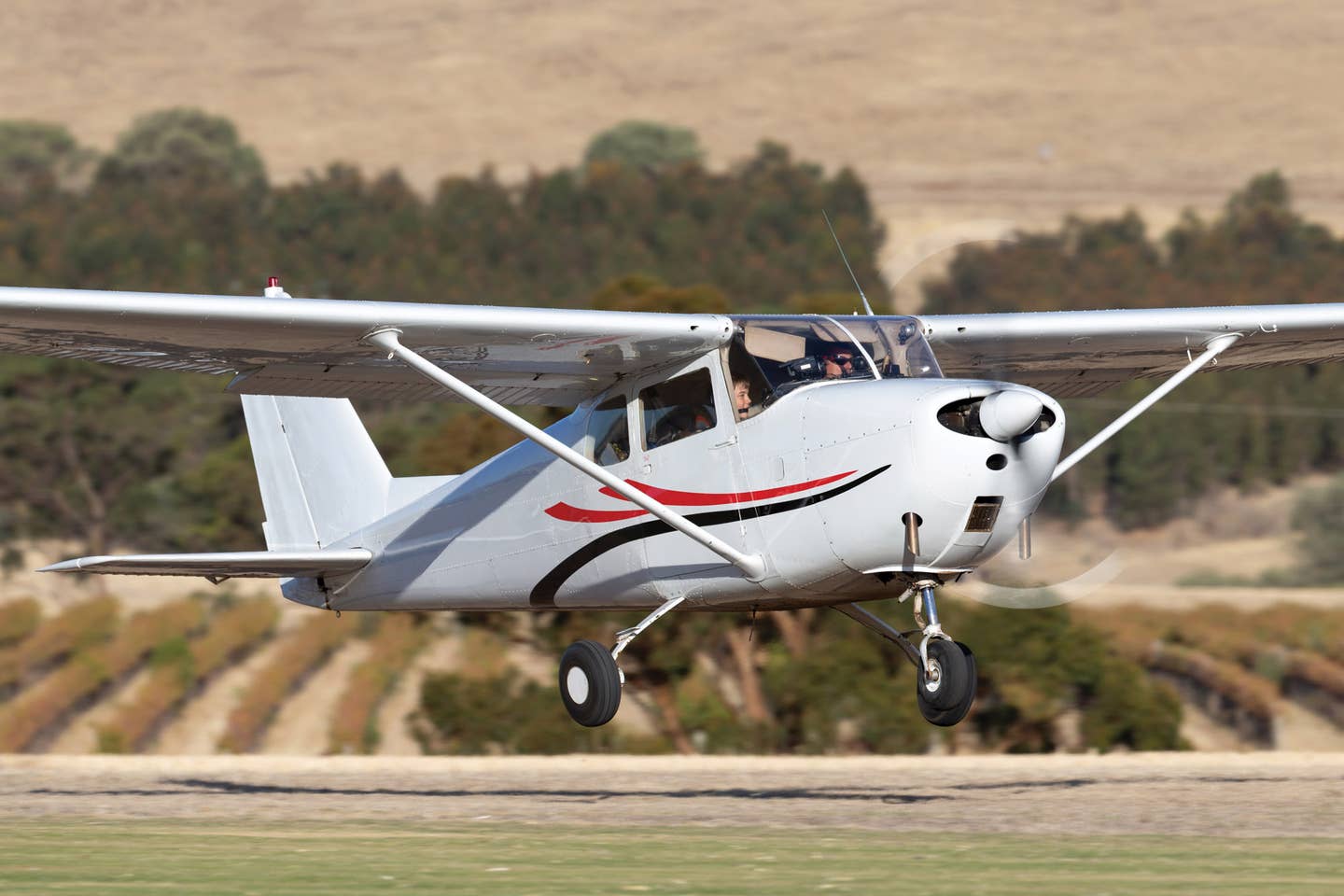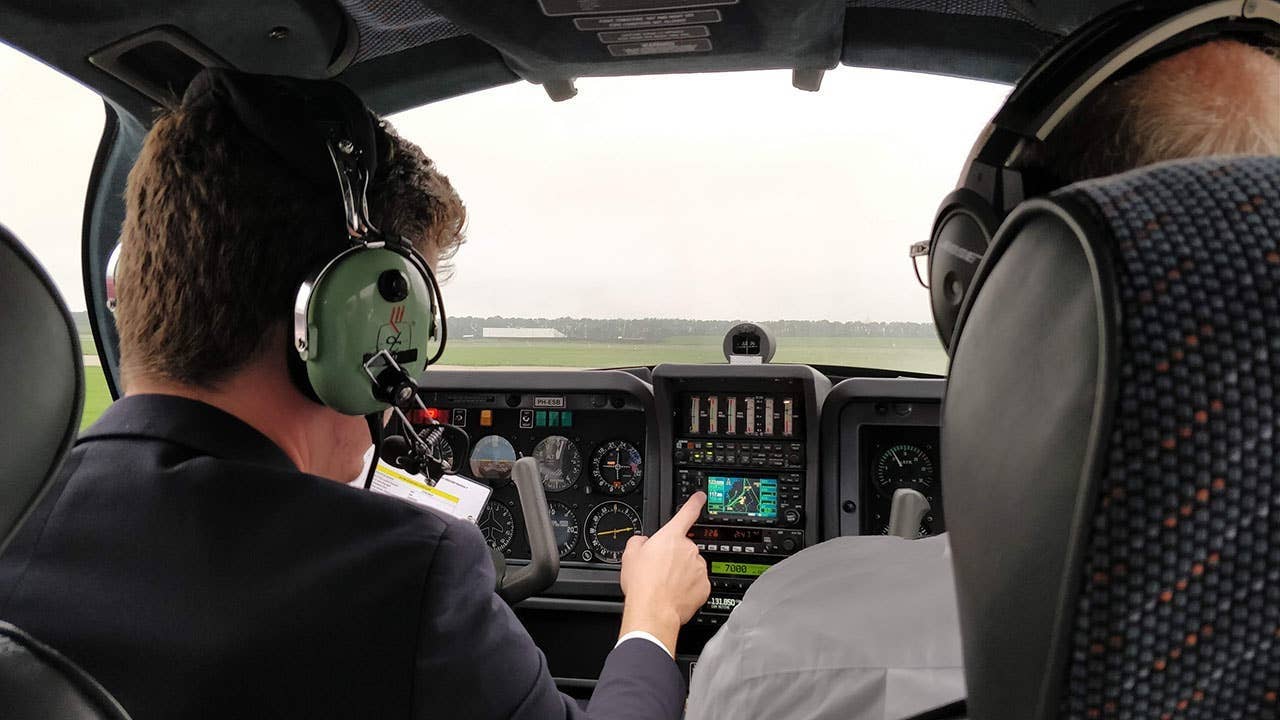Printed Planes
While your next plane won’t be 3D-printed (we think), plenty of parts will be soon, thanks to huge advances in additive manufacturing
Let's get one thing straight right from the start: You cannot have your next plane printed for you. Not now, not soon, probably not ever.
It's a beautiful dream, to be sure, like the Willy Wonka invention that let kids reach into a television screen and pull out a chocolate bar. In this case, you'd work up some CAD drawings, maybe spin an on-screen model around to check your work, then hit command-P, head over to the printer, and taxi out in your new ride. Print me up a couple extra copies, while you're at it.
As I said, not going to happen. Still, there's a good chance your future aircraft will have plenty of 3D-printed parts, thanks to huge advances in what the engineers refer to as additive manufacturing. The technology enables huge weight savings, more complex parts shapes, sometimes faster production, revolutionary parts count reductions, and an unprecedented level of fine control over material strength and flexibility.
Here's how additive manufacturing works. In traditional metal manufacturing, parts are either cast from metal that's poured into a mold, whittled down with machining tools from a solid block of material or forged into shape with a hammer. By any of those methods, there's a lot of expense and wasted material and time.
Additive manufacturing works in reverse, by adding material slowly, layer by layer. In the most popular, powder-bed machines, a thin layer of metal powder is spread across a flat surface. Then, in much the same way that an inkjet printer head squirts its ink patterns, a laser or electron beam passes overhead, melting selected areas of powder into solid metal.
That's one layer, as fine as one-fifth the width of a human hair. Spread some more powder over the cooled result and make another pass. Repeat again and again and again---and again!---until you have a finished structure.
It's not a new idea. 3D printing experiments go back 20 years or more, according to Jack Beuth, a metals additive manufacturing pioneer who's professor of mechanical engineering and director of the NextManufacturing Center at Carnegie Mellon University.
What has made the technology take off, so to speak, for aerospace has been the development of computer-driven lasers and electron beams. Those result in faster builds and the potential for finer control.
It also turns out aviation and aerospace make the perfect case study as additive moves from the lab to the factory. Take the cobalt chrome fuel nozzle that GE Aviation has just begunto 3D print for its Leading Edge Aviation Propulsion (LEAP) jet engines. LEAP engines have become the company's best-selling powerplant ever, with more than 10,000 on order even though the first customer unit is yet to be delivered.
The cobalt chrome fuel nozzle "was almost a perfect component to work into a jet engine," says Prof. Beuth. "It was an expensive component. It was complicated---the nozzle originally consisted of about 20 parts." Those were die-cast, then machined, welded together and brazed. "GE was able to print up that same component as one, single part."
But the real game changer was efficiency. As designers sought to optimize fuel flow, there were nozzle shapes they dreamed up that simply couldn't be made with traditional methods. With additive manufacturing, even the most convoluted geometry became possible. "There was a significant performance advantage," Beuth says.
The additive LEAP nozzle is a significantly more durable part, too. Because it's made of a designer alloy never before used in aviation, the new nozzle is estimated to have five times the life of the component it replaces.
Oh, and it's lighter and stronger. Each of the 19 new LEAP nozzles in an engine weighs 25 percent less than the previous component. Plus, the absence of welding seams means eliminating those places where part failures most often occur.
Nice win all around, but how does this help if your next aircraft purchase isn't a single-aisle jetliner? Glad you asked, because the experience GE gained with its LEAP initiative has led directly to an all-new GE Advanced Turboprop (ATP) engine, which will power the forthcoming Cessna Denali. For the ATP, which competes with the venerable Pratt & Whitney PT6 series, about 35 percent of all the engine parts will come from printers instead of castings. That's 855 parts made the old way that have been reduced to, um, 12.
And that's a big deal. GE says the ATP will make 10 percent better power and burn 20 percent less fuel than Brand P.
Now, GE is going all in on additive: The ATP turboprop will be made in the Czech Republic, but GE recently opened a factory in Auburn, Alabama, to capitalize on 3D printing. The company expects to print 45,000 nozzles there per year, with 100,000 by 2020.
Still, there are limits to powder-bed laser manufacturing. "You don't want to take months to make a part that's 100 pounds at a gram an hour," says John O'Hara, Global Sales Manager at Chicago-based Sciaky, Inc.
"If you can make it with a powder bed, you probably ought to," O'Hara says. "But if you're talking about anything bigger than about a football, it just doesn't make economic or technical sense.
Enter the Sciaky Electron Beam welding machine. It's a room-sized box that transforms spools of metal welding wire into parts at rates of up to about 20 pounds per hour. Sciaky has used its equipment to make flaperons for F-35 fighter jets and is currently working with Airbus on large, titanium structures for its airliners.
As with the smaller, powder bed lasers, time and cost are major advantages. The flaperon part for Lockheed Martin's F-35 is an object about 11 feet long, with a small tab that sticks up about 2 feet down at one end. If you wanted to machine that part from a solid billet of titanium, you'd have to start with a block that's 2 feet by 2 feet by 11 feet. With Lockheed's current forging method, you'd still have to buy a huge block of titanium "and then smash it with a hammer into that crazy shape," says O'Hara. "It would be verywasteful, and it would still need a lot of machining work."
In aerospace manufacturing, that waste is called the buy-to-fly ratio, and it's a primary driver of expense. It also would take about 18 months to make a forging, according to O'Hara. "If you give me an order for one of those, as long as I have the wire in inventory, I can print one for you by Friday," with less material and less finish machining required.
With such radical improvements to materials waste and time, more and more future aircraft are going to be "Designed for Additive," with exotic metals and alloys, says O'Hara. "The designer is going to be able to say, ’I used to make this out of a big billet of aluminum. But now I can make it so much smaller and better since titanium parts won't cost so much.'"
Those titanium parts will last longer and have fewer maintenance issues, even while they enable new levels of performance. And the benefits won't just be for production parts. Prototyping will be faster and cheaper. Even components for which casting still makes sense can be cheaper, since tooling and dies can be 3D printed.
Yet, as impressive as these results are, Prof. Beuth says we're just beginning to see the benefits of 3D printing. At Carnegie Mellon's NextManufacturing Center, researchers are experimenting with techniques to control the properties of metal at the molecular level. Alter the size of the crystal grains in a metal, and it turns out you can change strength or flexibility.
Consider, for example, a part called a stress concentrator inside the disk of a turbine engine. "With additive, you can make finer grains there to resist those higher stresses," notes Prof. Beuth. "In other regions of the part, you might want to make it so that you can stretch the material a lot before it breaks, what we call ductility. So, in those areas, you can have larger grains. You can actually specify those."
And he continues, for the first time ever, "You can make these optimized parts that you just can't make by other means."
Along with molecular manipulation, the Carnegie Mellon team is also beginning to think more deeply about cellular meshes for manufacturing. "You can have a part now that on the outside looks like it's solid," Beuth says. "But it's just a shell. On the inside, it's a honeycomb, an internal structure that's very strong, very stiff and also very light."
Those honeycomb designs also make better heat exchangers. "You can make a much more efficient heat exchanger if you have a whole lot of surface area per volume," Beuth explains. "You can now make very complex heat exchangers that can be much more efficient than you could make by conventional means."
It's a compelling vision for the future. And, this future is coming at us at increasing speed. In 2014, Carnegie Mellon bought state-of-the-art 400-watt powder bed laser manufacturing machines for its labs. Since then, laser power has increased by an entire order of magnitude, with the latest generation machines fusing together the energy of four 1 kilowatt lasers. "That increases your build rate by a factor of 10 compared to our machine, which was the very most advanced one just two years ago," says Beuth.
Suddenly, parts that didn't make sense to additively manufacture just two years ago, have a business case. Beuth says that in the last year, he's seeing a whole new level of interest in 3D printing. In the past, most inquiries came from aerospace. Today, it's any business making metal parts. That creates a cycle in which technical progress and scale keep ramping up, while costs keep spiraling down.
In the end, says O'Hara, 3D printing isn't going to completely replace traditional manufacturing methods. It will complement them. "We're going to be another tool that can be used to make aircraft parts," he says.
Better, cheaper, faster. As a pilot with a very expensive passion for flying, that all sounds good to me.
And, hey, even though I know it's a daydream, if you happen to have CAD drawings for a Pilatus, maybe we could just try to print a few?
Learn more at Carnegie Mellon University's NextManufacturing Center, Sciaky, and GE Aviation.
Also, for a more general overview of the development and use of 3D printing technology, check out some of CMU's additive manufacturing videos below.
A commercial pilot with instrument privileges, Grant Opperman is a writer and business strategy consultant who flies himself to more than 20 states across the U.S. for business and pleasure.
Do you want to read more articles about how science and technology are changing the world of personal flying? Check out our Future Flight archive.

Subscribe to Our Newsletter
Get the latest Plane & Pilot Magazine stories delivered directly to your inbox






